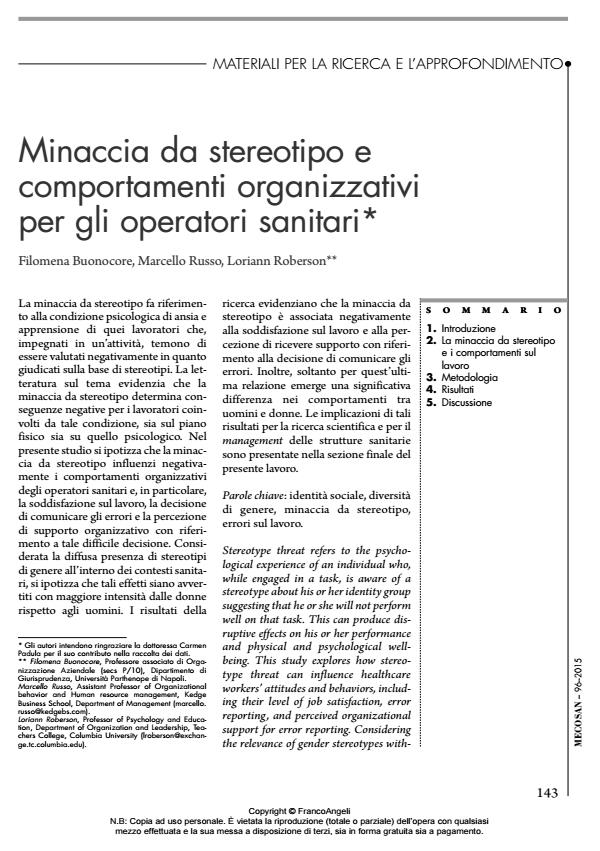Minaccia da stereotipo e comportamenti organizzativi per gli operatori sanitari
Journal title MECOSAN
Author/s Filomena Buonocore, Marcello Russo, Loriann Roberson
Publishing Year 2016 Issue 2015/96
Language Italian Pages 15 P. 153-158 File size 166 KB
DOI 10.3280/MESA2015-096007
DOI is like a bar code for intellectual property: to have more infomation
click here
Below, you can see the article first page
If you want to buy this article in PDF format, you can do it, following the instructions to buy download credits

FrancoAngeli is member of Publishers International Linking Association, Inc (PILA), a not-for-profit association which run the CrossRef service enabling links to and from online scholarly content.
Stereotype threat refers to the psychological experience of an individual who, while engaged in a task, is aware of a stereotype about his or her identity group suggesting that he or she will not perform well on that task. This can produce disruptive effects on his or her performance and physical and psychological wellbeing. This study explores how stereotype threat can influence healthcare workers’ attitudes and behaviors, including their level of job satisfaction, error reporting, and perceived organizational support for error reporting. Considering the relevance of gender stereotypes within the healthcare industry, we assume that these relationships are stronger for women rather than men. Findings show that stereotype threat is negatively associated with job satisfaction and perceived organizational support for error reporting both among women and men. Results indicate the presence of significant differences between women and men only for what concerns the perception of organizational support towards error reporting. Implications for theory and practices are discussed.
Keywords: Gender diversity, stereotype threat, error reporting, job performance.
- Leadership femminile in sanità: possibili soluzioni e strumenti. Un caso di studio Paola Paoloni, Francesca Dal Mas, Amelia Barcellini, in MECOSAN 120/2022 pp.83
DOI: 10.3280/MESA2021-120006
Filomena Buonocore, Marcello Russo, Loriann Roberson, Minaccia da stereotipo e comportamenti organizzativi per gli operatori sanitari in "MECOSAN" 96/2015, pp 153-158, DOI: 10.3280/MESA2015-096007